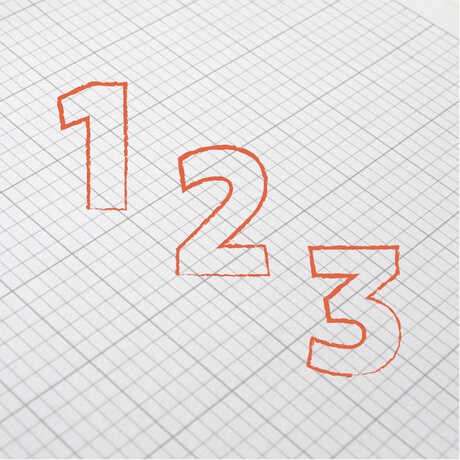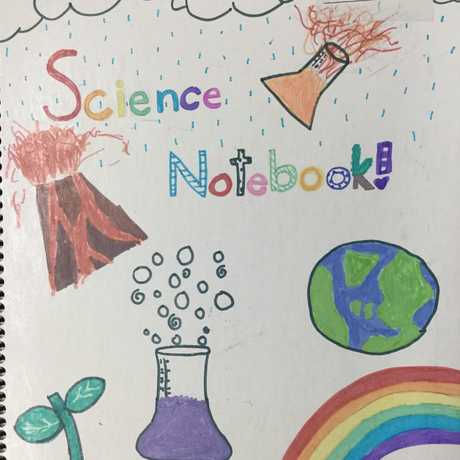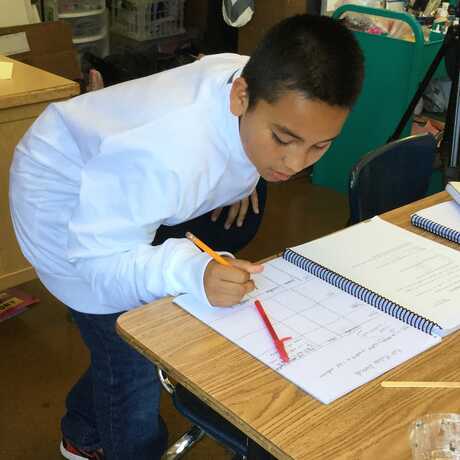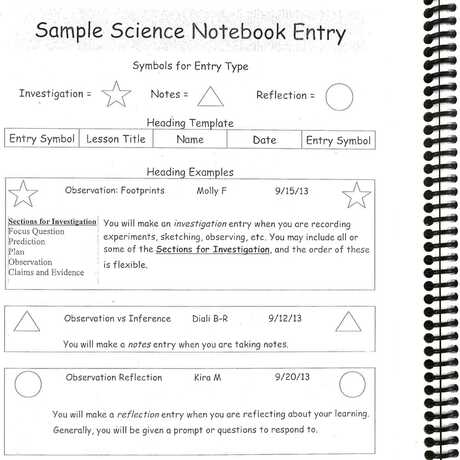
In this lesson, students peruse sample pages from the notebooks of many different scientists. They look at notebooks from scientists their own age, from high-school scientists, from science teachers, and from field scientists dating back to 1905. They consider the ways in which scientists have used notebooks over the last several hundred years, and start to think about how they'll use theirs.
Students will be able to:
- Observe a variety of strategies that scientists use to document their thinking
- Select strategies they’d like to incorporate into their own science notebook.
How do scientists use notebooks?
- Samples from archived field books
- Samples from teacher & student notebooks
- Student science notebooks (1 per student)
- Additional notebook examples (optional)
Scientists in the field take notes to help remember the specific details about what they are observing. Even in today’s digital world, there is information that can only be captured in field notes such as size, texture and smell. Experimental science must be replicable and consistent. When doing experiments, researchers take notes to document exactly what they did so their procedure can be replicated.
This lesson can be taught as an introduction to science notebooks or it can be taught once students have already been using science notebooks for a few weeks. It will help students identify what components they want to include in their notebooks and can help improve the overall quality of the notebooks.
- Print and set around the room (tape to tables or walls) one set of Academy Fieldbook pages.
- Print and set around the room (tape to tables or walls) one set of Teacher & Student notebook pages.
- (Optional) Gather any additional science notebook examples from colleagues or students at other grade levels, and set around the room.
- Write Focus Question on the board.
- Facilitate a discussion about why scientists use notebooks.
- Introduce the focus question: “How do scientists use notebooks?”
- As a class, brainstorm a list of evidence students expect to see in scientist field notes, teacher science notebooks, and student science notebooks.
- Have students walk around to the different examples (student, teacher, and scientist) notebooks. Instruct students to look for different strategies scientists use for recording data and observations.
- (Option 1) Have students sketch a snapshot of one favorite page in a science notebook and explain why they like it.
(Option 2) Have students carry post-it notes with them and place post-its on different notebook pages with comments. They can use the sentence-stems “I value...” and “I wonder...”
Discuss in small groups or as a class:
- What did you notice in the notebooks?
- What ways did scientists collect and communicate their data and observations?
- What strategies did you see that you would like to incorporate into your own science notebook?
- What notebook components were most helpful as an outsider?
After students have been working in their science notebooks for a few weeks, have them do a gallery walk of their own science notebooks to see what others are doing and share their work.
The Smithsonian Field Book Registry Project: http://www.mnh.si.edu/rc/fieldbooks/
Biodiversity Heritage Library: http://biodiversitylibrary.org
Patton, James, and John Perrine. “Letters to the Future.” Field Notes on Science & Nature. Ed. Michael Canfield. Cambridge: Harvard UP, 2011. 211-250.
Attached Files

Science Notebook Corner
Learn how notebooks can help your students think and act like scientists.









